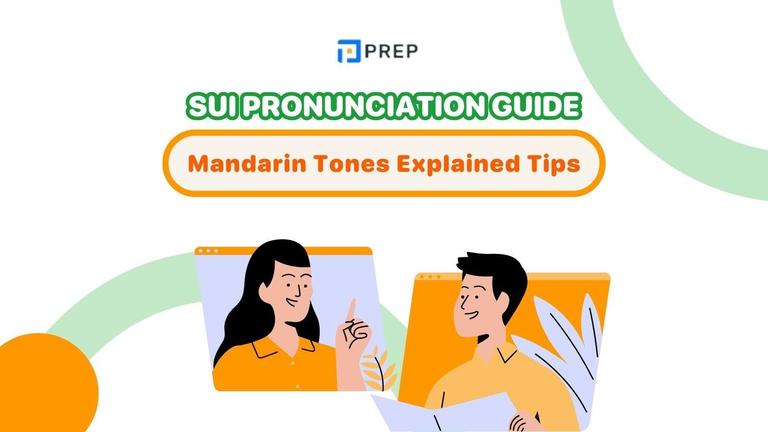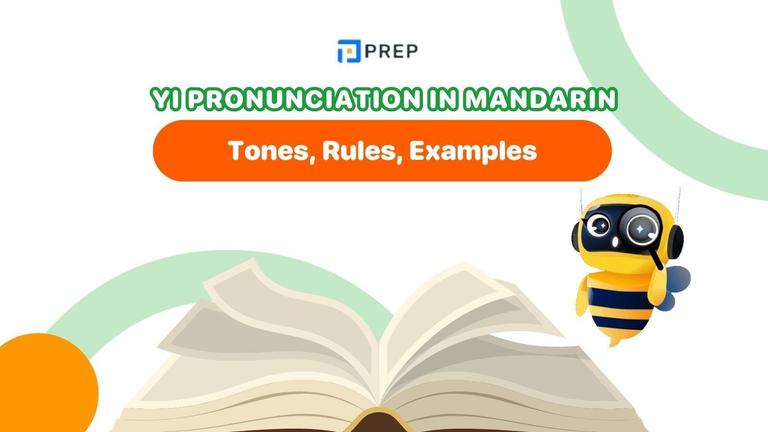Cooking Conversation: Topics, Vocabulary & Examples
Cooking is a daily activity in our lives. In today's article, let's explore with PREP the list of common food vocabulary, useful communication phrases, and the best English conversations about cooking.
I. Common Topics for Cooking Conversations
Cooking is a universal topic that connects people across cultures, making it perfect for language learners to practice real-life communication. In English learning, “cooking conversations” often refer to dialogues that involve food preparation, ingredients, kitchen tools, and personal experiences with cooking.
Practicing conversations related to cooking helps learners activate useful vocabulary, ask and answer natural questions, and express preferences or opinions clearly.
Popular themes for cooking conversations include:
- Daily Cooking – Talking about what you cook for breakfast, lunch, or dinner, favorite home recipes, and quick meal ideas.
- Food Culture and Traditions – Discussing traditional dishes from your country, seasonal food, and festive meals — a topic that can also come up in a conversation about hobbies.
- Kitchen Mishaps and Funny Moments – Sharing humorous or unexpected events while cooking, such as burning a dish or forgetting an ingredient.
By exploring these topics, learners can practice using descriptive language, express preferences, and share personal experiences—all essential skills for real-life English communication.
II. Useful Phrases and Vocabulary for Cooking Conversations
To have natural and engaging cooking conversations, you need a solid foundation of topic-specific vocabulary and useful expressions. This section will introduce kitchen-related words, cooking methods, flavor descriptions, and expressions commonly used when discussing food and cooking.
Kitchen Tools and Equipment
|
Vocabulary |
Definition |
|
pan |
flat-bottomed metal container for frying |
|
pot |
deep, round container for boiling or stewing |
|
cutting board |
flat surface used for chopping food |
|
spatula |
flat tool used for flipping or mixing |
|
ladle |
deep spoon for serving soup or sauce |
|
oven |
appliance for baking or roasting food |
|
whisk |
tool for beating or whipping food |
|
blender |
electric tool for mixing or pureeing |
|
tongs |
tool for grabbing and turning hot food |
|
peeler |
tool to remove the skin of fruits or vegetables |
Ingredients and Flavors
|
Vocabulary |
Definition |
|
salt |
mineral used to enhance flavor |
|
pepper |
spice made from peppercorns |
|
garlic |
strong-smelling bulb used in many cuisines |
|
onion |
round vegetable used in savory dishes |
|
herbs |
leafy greens used for flavoring |
|
spicy |
having a strong, hot flavor |
|
sweet |
sugary in taste |
|
sour |
sharp, acidic taste |
|
bitter |
sharp, often unpleasant flavor |
|
savory |
salty or spicy, not sweet |
|
tangy |
pleasantly sharp taste |
Cooking Methods and Techniques
|
Vocabulary |
Definition |
|
boil |
cook in hot water |
|
grill |
cook directly over heat (usually with a grill rack) |
|
fry |
cook in hot oil |
|
steam |
cook with vapor from boiling water |
|
roast |
cook with dry heat in an oven |
|
bake |
cook in the oven (especially for bread, cakes) |
|
stir |
move food around with a spoon while cooking |
|
chop |
cut into smaller pieces |
|
dice |
cut into small cubes |
|
marinate |
soak in sauce to add flavor |
|
simmer |
cook slowly at low heat |
Describing Food and Taste
|
Vocabulary |
Definition |
|
delicious |
very tasty |
|
bland |
lacking flavor |
|
spicy |
strongly flavored with chili or spices |
|
overcooked |
cooked for too long, often dry or tough |
|
undercooked |
not cooked enough |
|
juicy |
full of liquid, especially meat or fruits |
|
chewy |
requires a lot of chewing |
|
crispy |
firm and crunchy when eaten |
|
burnt |
overcooked so it's black or bitter |
|
crunchy |
makes a noise when bitten into (positive texture) |
Common Phrases and Idioms
|
Phrase or Idiom |
Meaning |
|
“What are you cooking today?” |
Asking what someone is preparing |
|
“Can I help you with anything?” |
Offering assistance in the kitchen |
|
“A recipe for disaster” |
Something likely to go wrong |
|
“Too many cooks spoil the broth” |
Too many people involved ruins the result |
|
“Spill the beans” |
To reveal a secret |
|
“In a pickle” |
In a tricky or unpleasant situation |
|
“Add your own twist” |
Customize a recipe or idea |
III. Sample Cooking Conversations
Cooking is a familiar topic, and the expressions used in cooking conversations can also be applied in many other contexts, especially when talking about routines, preferences, or past experiences.
In this section, you’ll find three cooking conversations at beginner, intermediate, and advanced levels. Each dialogue shows natural language use, common sentence structures, and useful vocabulary to help you speak more fluently and naturally.
1. Beginner–Level Conversation
These beginner-level conversations are short, practical, and easy to remember. They cover simple cooking-related situations using present simple and present continuous tenses — the two most common tenses used in daily conversations about routines and actions in progress.
Conversation 1: Making Breakfast - Tense used: Present Simple
- Anna: What do you usually eat for breakfast?
- Ben: I usually have eggs and toast.
- Anna: Do you cook them yourself?
- Ben: Yes, I cook every morning.
- Anna: That sounds healthy!
- Ben: I try to keep it simple and quick.
Conversation 2: Preparing a Salad - Tense used: Present Continuous
- Liam: What are you doing?
- Emma: I’m making a salad for lunch.
- Liam: What are you putting in it?
- Emma: Just lettuce, tomato, and cucumber.
- Liam: It looks fresh!
- Emma: Thanks! I’m slicing the vegetables now.
Conversation 3: Talking About Dinner - Tense used: Present Simple
- Mark: Do you cook dinner every day?
- Tina: No, I usually cook three times a week.
- Mark: What’s your favorite dish to make?
- Tina: I love making chicken stir-fry. It’s fast and tasty.
- Mark: That sounds good. I want to try it.
- Tina: Come over next time—I’ll cook for you!
These dialogues are great for practicing:
- Asking and answering yes/no and wh- questions
- Daily routine vocabulary
- Expressing basic opinions about food
2. Intermediate–Level Dialogue
These dialogues are designed for learners at an intermediate level who are ready to use past simple tense to talk about cooking experiences, daily routines, or special meals. They contain storytelling elements, descriptive language, and occasional follow-up questions — perfect for preparing smooth, realistic conversations.
Dialogue 1: Cooking Together at Home - Tense used: Past Simple
- Jake: What did you cook last night?
- Sara: I made pasta with homemade tomato sauce.
- Jake: That sounds great! Did you cook alone?
- Sara: No, my sister helped me chop the vegetables.
- Jake: Was it hard to make?
- Sara: Not really. It just took about 30 minutes.
Dialogue 2: First Time Trying a New Recipe - Tense used: Past Simple
- Lina: Have you ever tried baking bread before?
- Tom: Yes, I actually baked bread for the first time last Sunday.
- Lina: Wow, how did it turn out?
- Tom: The outside was perfect, but the inside was a bit undercooked.
- Lina: What did you do?
- Tom: I watched some tutorials and tried again. The second loaf was much better!
Dialogue 3: Helping in the Family Kitchen - Tense used: Past Simple
- Amy: Did you cook often with your mom when you were a child?
- Noah: Yes, especially during holidays.
- Amy: What dish did you enjoy making the most?
- Noah: I loved helping her bake cookies — I always got to lick the spoon.
- Amy: That’s a sweet memory!
- Noah: Still is. I use her recipe now when I bake.
Key learning points in these dialogues:
- Use of past simple to talk about personal experiences
- Vocabulary for food preparation and emotional expression
- Building conversation flow with natural follow-up questions
3. Advanced-Level Dialogue
At the advanced level, cooking conversations go beyond asking and answering basic questions. Learners must be able to express complex opinions, use idiomatic language, and engage in meaningful discussions related to personal habits, food culture, or even social issues like healthy eating vs fast food.
Dialogue 1: Healthy Eating vs Fast Food
Tenses used: Present simple, present perfect, complex sentences
Language focus: Idioms, formal opinion expressions, contrasting ideas
- Alex: I’ve been trying to eat more healthily these days, but it’s tough.
- Nina: Same here. Fast food is just so convenient, especially when you’re pressed for time.
- Alex: True, but don’t you think eating like that regularly is a recipe for disaster?
- Nina: Definitely. I started cooking at home more, and although it takes longer, the meals are healthier and cheaper in the long run.
- Alex: That makes sense. I guess I just need to bite the bullet and start meal-prepping.
- Nina: Once you get into the habit, it becomes second nature — and your body will thank you.
Dialogue 2: Cultural Identity Through Cooking
Tenses used: Present perfect, past simple, complex relative clauses, passive voice
Language focus: Fluency in description, paraphrasing, emotion sharing
- Sophie: Have you ever cooked any traditional dishes from your country?
- Kenji: Yes, I grew up helping my grandmother make miso soup — it’s more than just food; it’s part of who we are.
- Sophie: That’s beautiful. I’ve always felt that cooking connects us to our roots.
- Kenji: I agree. Every time I prepare that soup, I remember the stories she told while we chopped vegetables.
- Sophie: Sounds like those memories have been carefully preserved through your cooking.
- Kenji: Exactly. Cooking isn’t just about taste — it’s about tradition and identity.
What learners gain from these dialogues:
- Exposure to realistic, high-level spoken English
- Use of connectors (although, even though, once, while) to link ideas smoothly
- Application of idioms and collocations related to food (bite the bullet, recipe for disaster)
- Practice of emotional expression and personal reflection — key for high scoring in advanced speaking tasks
IV. Cooking Conversations for Exams
Cooking conversations aren’t just useful for everyday small talk — they’re also highly relevant in English-language exams and real-world professional environments. Whether you're preparing for the IELTS Speaking test or working in a restaurant or hotel, being able to discuss cooking and food clearly and naturally is a valuable skill.
IELTS Speaking (especially Part 1 & 2):
-
Common questions:
- Do you like cooking?
- Who cooks in your family?
- Describe a meal you prepared recently.
- Key strategy: Use complex sentences and topic-specific vocabulary.
- Sample sentence: Although I don’t cook every day, I enjoy it when I have free time, especially on weekends.
TOEIC – Listening & Speaking:
- Situational role-plays (employee talking to chef/client)
- Describing routines: “I usually prepare 15 servings of salad before noon.”
- Listening tasks may involve kitchen instructions or food orders
- Common vocabulary: utensils, prep time, food quantity, allergy information
TOEFL Speaking:
- Integrated question may involve describing people’s opinions about cooking, food choices, or responsibility
- Strategy: Give examples from personal experience or cultural background
By mastering cooking conversations in exam and work contexts, you improve your ability to:
- Score higher in Speaking tests by sounding fluent, natural, and topic-aware
- Respond professionally in real-world situations
- Express yourself with more confidence and cultural awareness
V. Learn cooking conversations through videos
To communicate more effectively, in addition to building vocabulary and practicing sample sentences, you can also explore videos of cooking conversations in English. Below, PREP has compiled and summarized some English conversation videos on cooking - take a look!
- Cooking 👨🏻🍳 English Conversation
- Can You Cook It? - Cooking Verbs - Learn English Speaking Easily Quickly
- How to Cook in English: Cooking Vocabulary
- Cooking Verbs - Easy English
- Food | Talking about Food | Beginner English | A Conversation about Food
PREP hopes that after reading this article, you have accumulated a lot of vocabulary, sample communication phrases, and quality English conversations about cooking. Keep following PREP to regularly update your English conversation knowledge!

Hi I'm Chloe, and I am currently serving as an Product Content Administrator at Prep Education. With over five years of experience in independent online IELTS study and exam preparation, I am confident in my ability to support learners in achieving their highest possible scores.
Comment
Premium content
View allPersonalized roadmap
Most read












